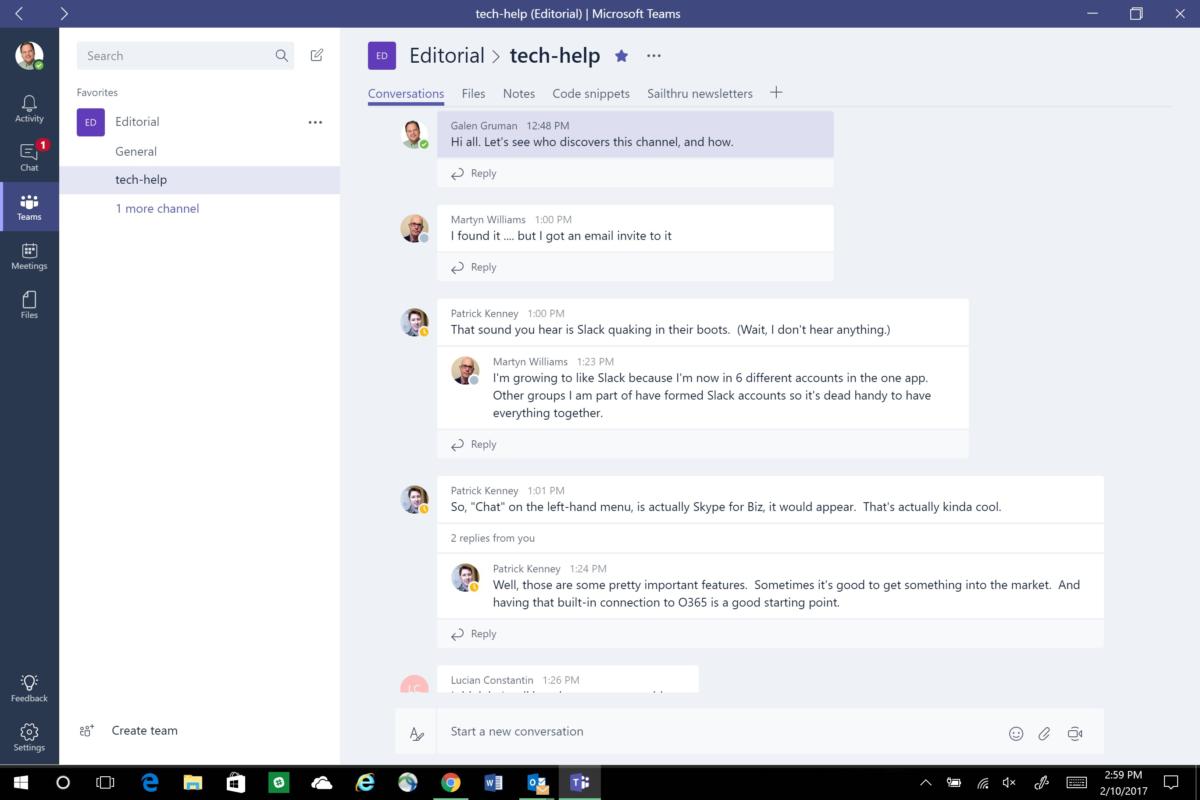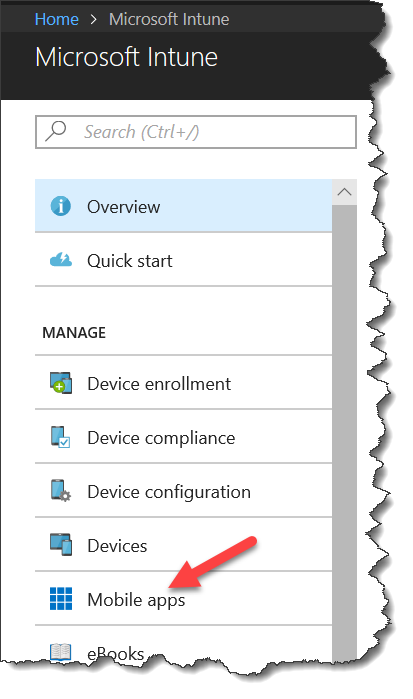Microsoft Teams Msi Installer
- The Teams MSI will place an installer in Program Files. Whenever a user signs into a new Windows User Profile, the installer will be launched and a copy of the Teams app will be installed in that user's appdata folder. If a user already has the Teams app installed in the appdata folder, the MSI installer will skip the process for that user.
- To get the MSI package for Windows distribution, see Install Microsoft Teams using MSI. Note Distribution of the client via these mechanisms is only for the initial installation of Microsoft Team clients and not for future updates.
- Teams Msi Download
- Microsoft Teams Msi Installer
- How To Install Microsoft Teams
- Msi Installer Package
- Msi Installer Windows 7
Microsoft Teams has clients available for desktop (Windows and Mac), web, and mobile (Android and iOS). These clients all require an active internet connection and do not support an offline mode.
Jul 25, 2018 Installing Microsoft Teams. Users can Install Microsoft Teams them self, they can download the installer from the Teams website or from the Microsoft Teams download page. The users don’t need administrator rights to install, because Teams will be installed in the user’s profile folder. May be the Teams machine-wide installer causing that issues, I would suggest just delete the Teams folder under C: Users username AppData Local Microsoft and download the latest version from teams.microsoft.com and try the installation fresh Hope this helps, Thuyavan.
In addition, the Teams MSI will place an installer in Program Files. Whenever a user signs into a new Windows User Profile, the installer will be launched and a copy of the Teams application will be installed in that user's appdata folder. In short Teams MSI installs Teams.exe to Program Files that is the actual installer triggered by each user on windows login by the run registry. By setting ALLUSER=1 property Teams MSI still is not using Windows Installer tables for installing all the files, instead, additional Custom Actions were created by Microsoft that will unpack all the.
Note
Effective November 29, 2018, you'll no longer be able to use the Microsoft Teams for Windows 10 S (Preview) app, available from the Microsoft Store. Instead, you can now download and install the Teams desktop client on devices running Windows 10 S mode. To download the desktop client, go to https://teams.microsoft.com/downloads. MSI builds of the Teams desktop client are not yet available for devices running Windows 10 S mode.
For more information about Windows 10 S mode, see Introducing Windows 10 in S mode.
Desktop client
Tip
Watch the following session to learn about the benefits of the Windows Desktop Client, how to plan for it, and how to deploy it: Teams Windows Desktop Client
The Microsoft Teams desktop client is a standalone application and is also available in Office 365 ProPlus. Teams is available for both Windows (7+), both 32-bit and 64-bit versions, and macOS (10.10+). On Windows, Teams requires .NET Framework 4.5 or later; the Teams installer will offer to install it for you if you don't have it.
The desktop clients provide real-time communications support (audio, video, and content sharing) for team meetings, group calling, and private one-on-one calls.
Desktop clients can be downloaded and installed by end users directly from https://teams.microsoft.com/downloads if they have the appropriate local permissions (admin rights are not required to install the Teams client on a PC but are required on a Mac).
IT admins can choose their preferred method to distribute the installation files to computers in their organization, such as System Center Configuration Manager (Windows) or Jamf Pro (macOS). To get the MSI package for Windows distribution, see Install Microsoft Teams using MSI.
Note
Distribution of the client via these mechanisms is only for the initial installation of Microsoft Team clients and not for future updates.
Windows
The Microsoft Teams installation for Windows provides downloadable installers in 32-bit and 64-bit architecture.
Note

The architecture (32-bit vs. 64-bit) of Microsoft Teams is agnostic to the architecture of Windows and Office that is installed.
The Windows client is deployed to the AppData folder located in the user’s profile. Deploying to the user’s local profile allows the client to be installed without requiring elevated rights. The Windows client leverages the following locations:
%LocalAppData%MicrosoftTeams
%LocalAppData%MicrosoftTeamsMeetingAddin
%AppData%MicrosoftTeams
%LocalAppData%SquirrelTemp
When users initiate a call using the Microsoft Teams client for the first time, they might notice a warning with the Windows firewall settings that asks for users to allow communication. Users might be instructed to ignore this message because the call will work, even when the warning is dismissed.
Note
Teams Msi Download
Windows Firewall configuration will be altered even when the prompt is dismissed by selecting “Cancel”. Two inbound rules for teams.exe will be created with Block action for both TCP and UDP protocols.
Mac
Mac users can install Teams by using a PKG installation file for macOS computers. Administrative access is required to install the Mac client. The macOS client is installed to the /Applications folder.
Install Teams by using the PKG file
- From the Teams download page, under Mac, click Download.
- Double click the PKG file.
- Follow the installation wizard to complete the installation.
- Teams will be installed to /Applications folder. It is a machine-wide installation.
Note
During the installation, the PKG will prompt for admin credentials. The user needs to enter the admin credentials, regardless of whether or not the user is an admin.
If a user currently has a DMG installation of Teams and wants to replace it with the PKG installation, the user should:

- Exit the Teams app.
- Uninstall the Teams app.
- Install the PKG file.
IT admins can use managed deployment of Teams to distribute the installation files to all Macs in their organization, such as Jamf Pro.
Note
If you experience issues installing the PKG, let us know. In the Feedback section at the end of this article, click Product feedback.
Web client
The web client (https://teams.microsoft.com) is a full, functional client that can be used from a variety of browsers. The web client supports Calling and Meetings by using webRTC, so there is no plug-in or download required to run Teams in a web browser. The browser must be configured to allow third-party cookies.
Teams fully supports the following internet browsers, with noted exceptions.
Microsoft Teams Msi Installer
| Browser | Notes |
|---|---|
| Internet Explorer 11 | Calling and Meetings aren't supported. Users who try to join a meeting on Internet Explorer 11 will be directed to download the Teams desktop client. |
| Microsoft Edge | Calling and Meetings supported on Edge RS2 or later |
| Chrome, the latest version plus two previous versions | Meetings supported on Chrome 59 or later As of July 3, 2019, screen sharing is supported without any plug-ins or extensions Calling is now supported |
| Firefox, the latest version plus two previous versions | Calling and Meetings aren't supported. Users who try to join a meeting on Firefox will be directed to download the Teams desktop client. |
| Safari 11.1+ | Safari is enabled on versions higher than 11.1 in preview. While in preview, there are known issues with Safari's Intelligent Tracking Prevention. |
How To Install Microsoft Teams
Note
As long as an operating system can run the supported browser, Teams is supported. Pci express system architecture ravi budruk pdf. For example, running Firefox on the Linux operating system is an option for using Teams.
The web client performs browser version detection upon connecting to https://teams.microsoft.com. If an unsupported browser version is detected, it will block access to the web interface and recommend that the user download the desktop client or mobile app.
Msi Installer Package
Mobile clients
The Microsoft Teams mobile apps are available for Android and iOS, and are geared for on-the-go users participating in chat-based conversations and allow peer-to-peer audio calls. For mobile apps, go to the relevant mobile stores Google Play and the Apple App Store. The Windows Phone App was retired July 20, 2018 and may no longer work.
Supported mobile platforms for Microsoft Teams mobile apps are the following:
Android: 4.4 or later
iOS: 10.0 or later
Note
The mobile version must be available to the public in order for Teams to work as expected.
Mobile apps are distributed and updated through the respective mobile platform’s app store only. Distribution of the mobile apps via MDM or side-loading is not supported by Microsoft. Once the mobile app has been installed on a supported mobile platform, the Teams Mobile App itself will be supported provided the version is within three months of the current release.
| Decision Point | Are there any restrictions preventing users from installing the appropriate Microsoft Teams client on their devices? |
| Next Steps | If your organization restricts software installation, make sure that process is compatible with Microsoft Teams. Note: Admin rights are not required for PC client installation but are required for installation on a Mac. |
Client update management
Clients are currently updated automatically by the Microsoft Teams service with no IT administrator intervention required. If an update is available, the client will automatically download the update and when the app has idled for a period of time, the update process will begin.
Client-side configurations
Currently, there are no supported options available to configure the client either through the tenant admin, PowerShell, Group Policy Objects or the registry.
Notification settings
There are currently no options available for IT administrators to configure client-side notification settings. All notification options are set by the user. The figure below outlines the default client settings.
Msi Installer Windows 7
Sample PowerShell Script
This sample script, which needs to run on client computers in the context of an elevated administrator account, will create a new inbound firewall rule for each user folder found in c:users. When Teams finds this rule, it will prevent the Teams application from prompting users to create firewall rules when the users make their first call from Teams.



